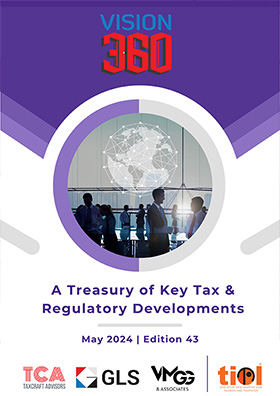Reversal of CENVAT Credit under Rule 3(5B) of CCR, 2004
FEBRUARY 10, 2015
By Brijesh Kothary, CA
CLAUSE (i) to Rule 3(5B) of the CCR, 2004 ( hereinafter referred to as the ‘CCR' ) provides that if the value of any input or capital goods before being put to use and on which CENVAT Credit has been taken is written off fully or partially or where any provision to write off fully or partially has been made in the books of account then the manufacturer shall pay an amount equivalent to the CENVAT Credit taken on such inputs/capital goods.
The Proviso to the Rule further contemplates that if the said inputs or capital goods on which the amount of CENVAT Credit is reversed are subsequently used in the manufacturing process, then the manufacturer can take back the amount which was reversed earlier, as Credit.
Rule 3(5B)(i) applies only to write off of inputs which have not been put to use. Therefore, if work in progress (WIP) or finished goods are partially written off or any provision for writing off the value of WIP or finished goods is made, then reversal of CENVAT Credit under this Rule is not warranted.
The Central Board of Excise and Customs vide Circular No. 907/27/2009-CX dated 07.12.2009 has clarified that the reversal provision applies even in case of obsolete goods contained in unfinished WIP. If such obsolete goods are contained in finished goods, then remission of duty is to be applied for under Rule 21 of the Central Excise Rules, 2002, where reversal of duty on inputs is required under Rule 3(5C) of the CCR. Therefore in such cases (i.e., obsolete inputs contained in obsolete final product), Rule 3(5B) will not apply.
Issues
As a consistent practice, manufacturing units make provision for writing off the value of inventory of raw materials based on its ageing analysis. In case of some units, the provision for writing off the value of inventory is undertaken at the time of finalization of accounts for the purpose of filing tax audit report with the Income Tax Department, during the month of August or September every succeeding year.
The provision for writing off the value of such materials (either fully or partially) is done on the basis of various criteria like:
++ Duration for which the material is available as idle stock;
++ Market value of the inventory;
++ Useful life of the materials in stock;
++ Order of finished goods in hand for which the material is used.
Some units reverse Credit on the amount of provision created based on the value of inventory, at the rate of Excise Duty, including Education Cess and Secondary & Higher Education Cess as applicable on the date of reversal. For illustration, if the unit identifies obsolete inventory worth Rs.500 and a provision to the tune of Rs. 100 (20%) is made, then the reversal for an amount of Rs. 12.36 (12.36% of Rs. 100) is made in the CENVAT Credit account. The provisional entry is passed in the books of account as at 31 st of March every year. The reversal of CENVAT Credit is done along with interest from the date of journal entry to the date on which reversal is done.
The Proviso to Rule 3(5B) of the CCR contemplates that if the material on which provision has been made and Credit has been reversed, is utilised in the manufacturing process subsequently, then the manufacturing unit can take back the CENVAT Credit attributable to the material used in their CENVAT Credit register by demonstrating that the item of inventory on which provision was made and CENVAT Credit was reversed is now used in the manufacture of finished goods.
As the reversal of CENVAT Credit is not done by identification of specific item of inventory on which provision is created, it becomes virtually impossible for the manufacturing unit to take back the Credit as they are not in position to demonstrate that the item of inventory on which provision was made and CENVAT Credit was reversed has actually been used in the manufacture of finished goods. Therefore, the CENVATCredit which was earlier reversed becomes cost in the hands of the manufacturing unit, which is against the principles of CENVAT Credit scheme.
Suggestion
The reversal of CENVAT Credit under Rule 3(5B) of the CCR must be made applicable only for such item of inventory on which specific provision for obsolescence is made or which has actually been written off from the books of account.
It is therefore suggested that a ‘second proviso' is inserted to Rule 3(5B) of the CCR clarifying that the provisions of this Rule shall not be applicable when a general provision for obsolescence in the value of inventory is made in the books of account without identification of specific item of inventory of raw materials.
|
(DISCLAIMER: The views expressed are strictly of the author and Taxindiaonline.com doesn't necessarily subscribe to the same. Taxindiaonline.com Pvt. Ltd. is not responsible or liable for any loss or damage caused to anyone due to any interpretation, error, omission in the articles being hosted on the sites)
|













